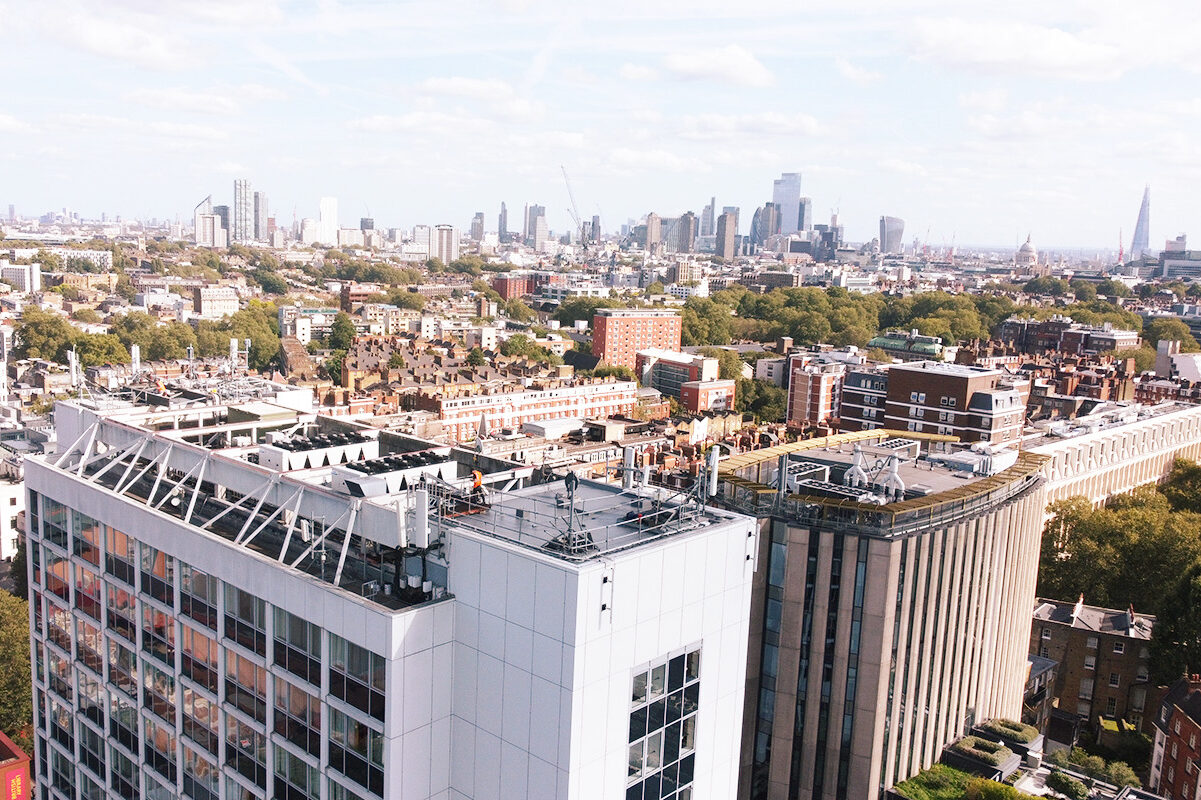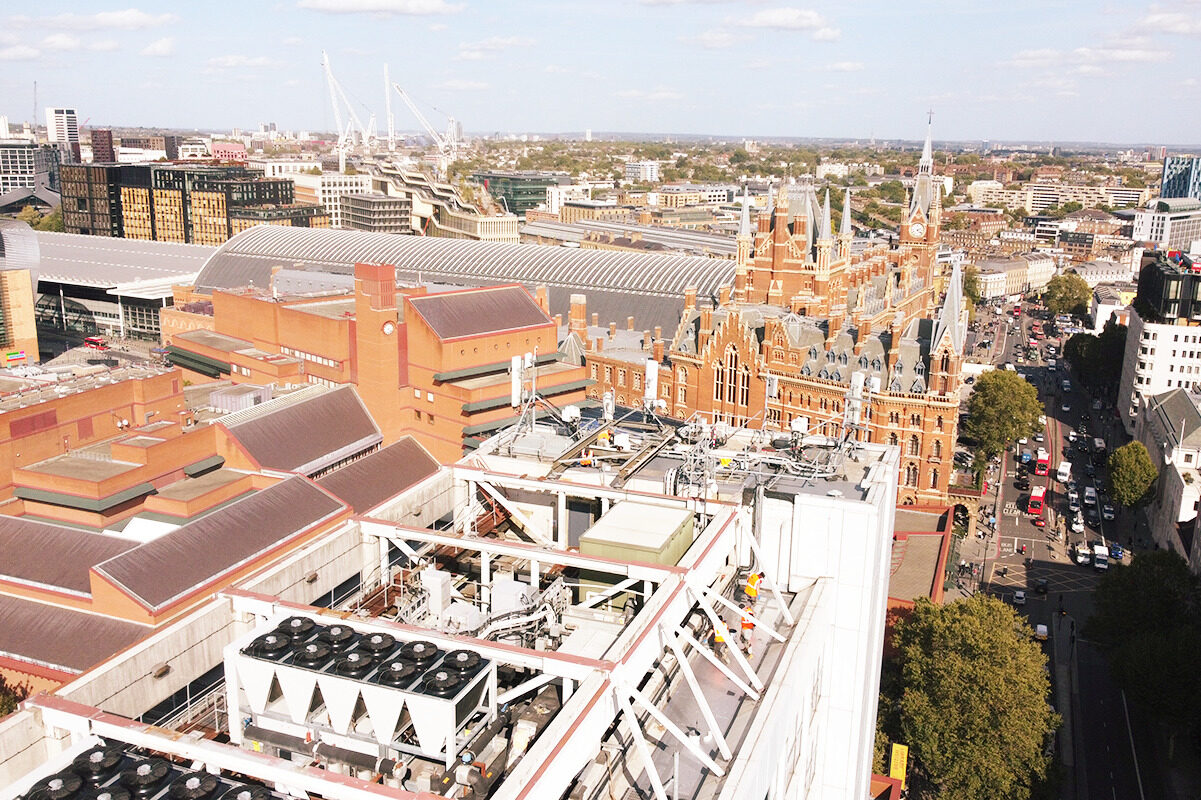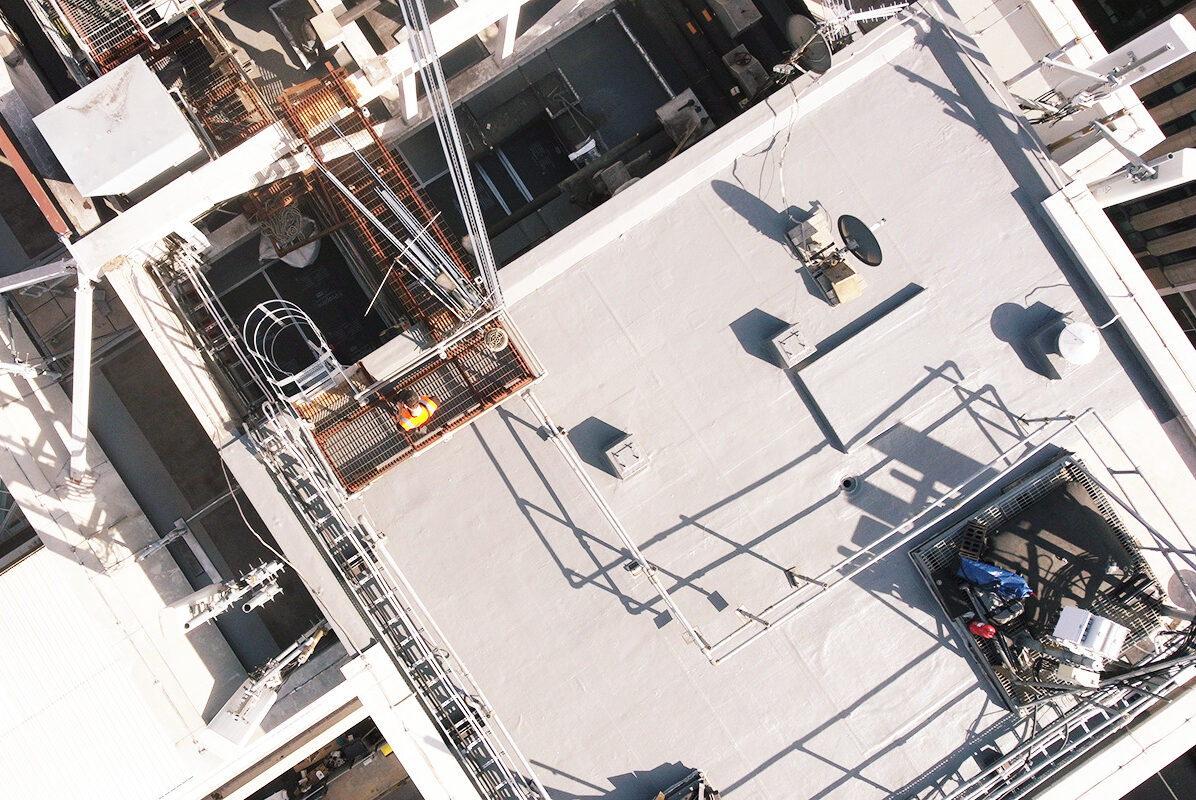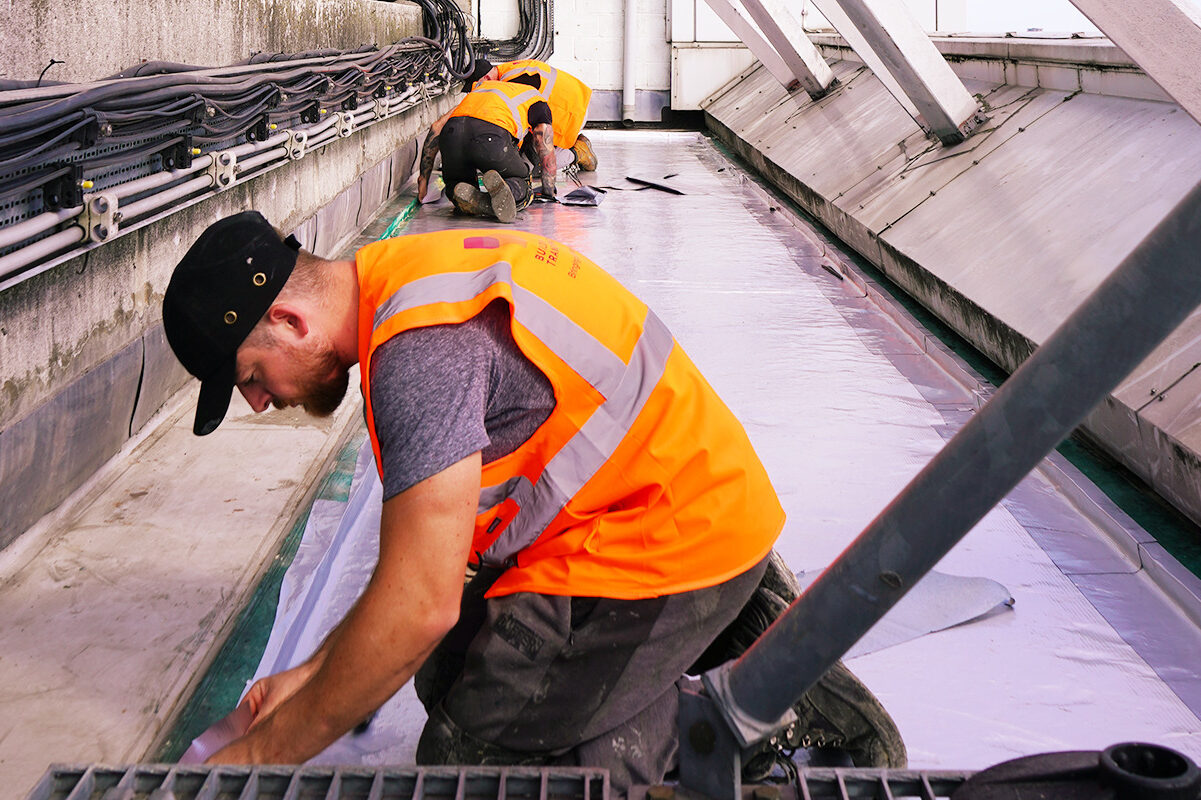
Pullman- Roof Replacement
Project Overview :
The Pullman London St Pancras hotel is situated centrally between London’s extremely busy Euston, St Pancras and Kings Cross stations, with the constant traffic of the Euston Road running directly outside the front of the property. Rising up to it’s full height in excess of 17-storeys, the Pullman hotel is a modern example of the city’s eclectic mix of buildings and overlooks many of the local properties.
As part of our multi-service and growing relationship with the client, our unique and holistic approach to the building envelope has aligned with the client’s over the last decade, helping them to maximise ROI across the portfolio. Through this holistic and all-encompassing approach we were asked to support the client through the replacement of their leaking and failing roofs, from the initial inception, core sampling and specification development, through to the delivery of the works.
With a multitude of individual buildings making up the overall hotel and all interconnected, each of the individual roofs had been repaired and maintained over the years, extending their lifespan and helping to prolong the need for replacement; however some of the roofs had finally reached the point where repairs and patching were no longer a viable or cost effective option, with the replacement of each roof providing the best solution for the future.
Originally built for the council in 1971 and re-purposed over the years, in 2005 it was transformed into the Pullman St Pancras and now takes its current form as a 17-storey modern hotel. Over the years, the roofs of the hotel have been replaced, repaired and have been found to leak, being a constant thorn in the hotel’s side and a nuisance for the hard-working maintenance team.
With the main roof of the 17-storey tower block having had quick fixes and repairs over the years, the leaks were becoming unsustainable and the roof had gone past its originally intended lifespan. The onsite team had been able to avoid the need for replacement by undertaking the repairs, but this was no longer viable and a long-term solution was needed.




